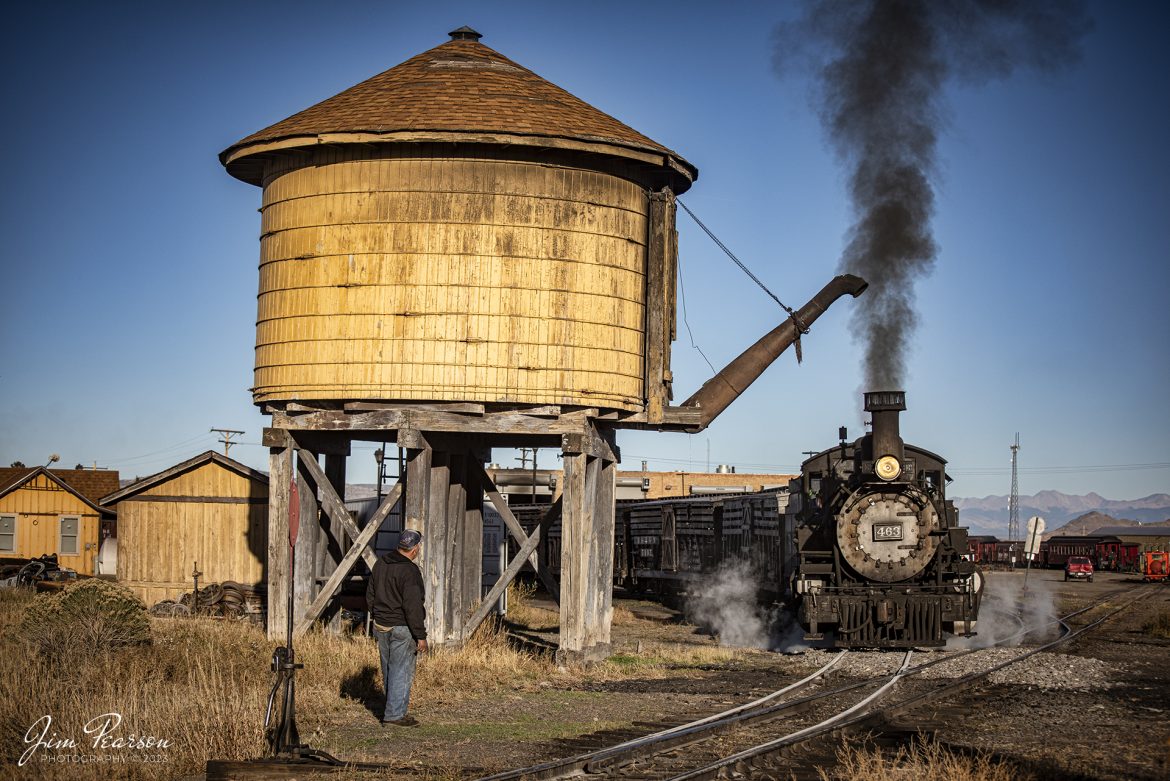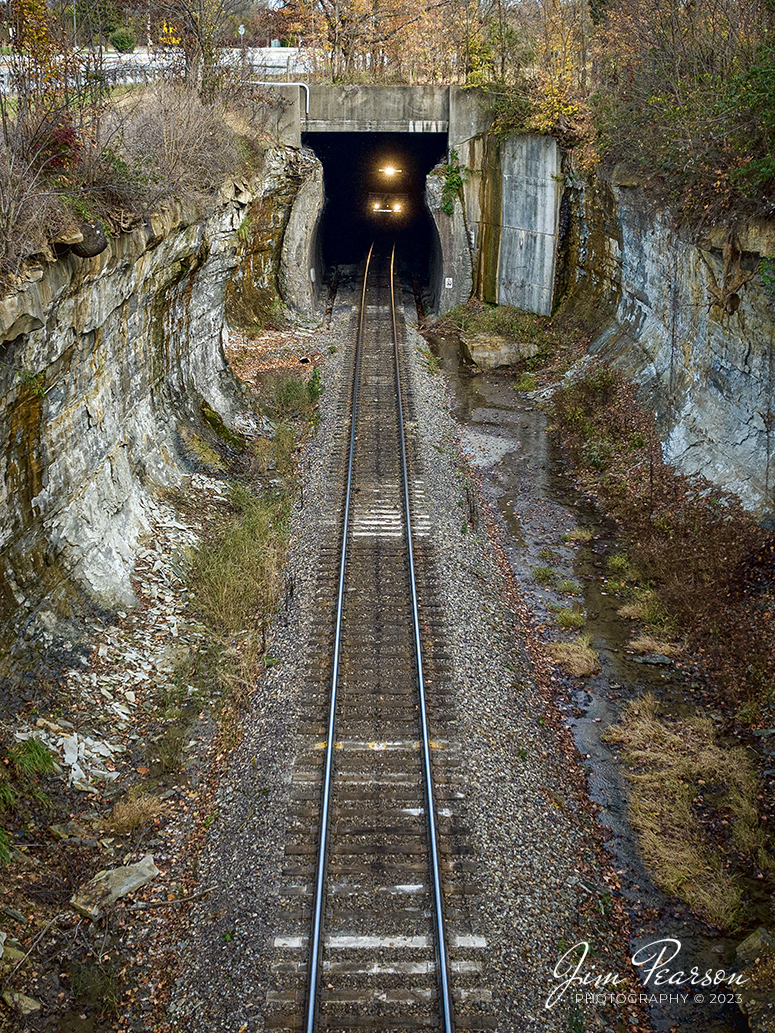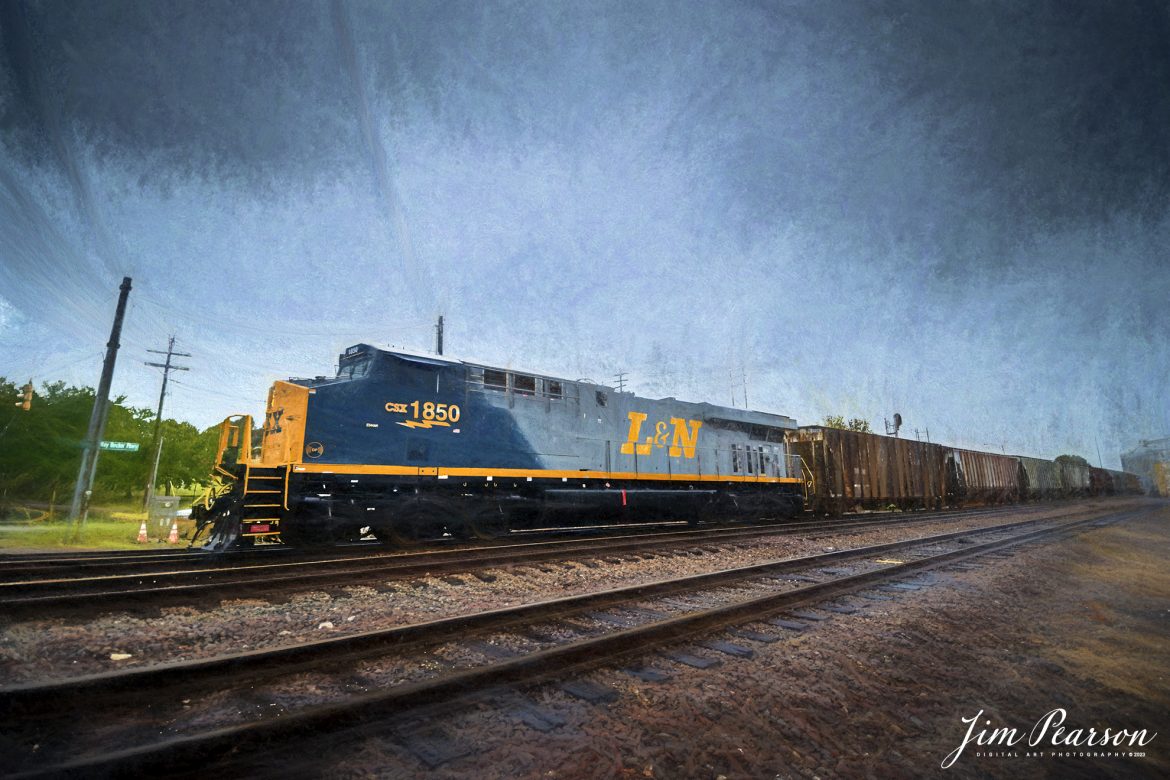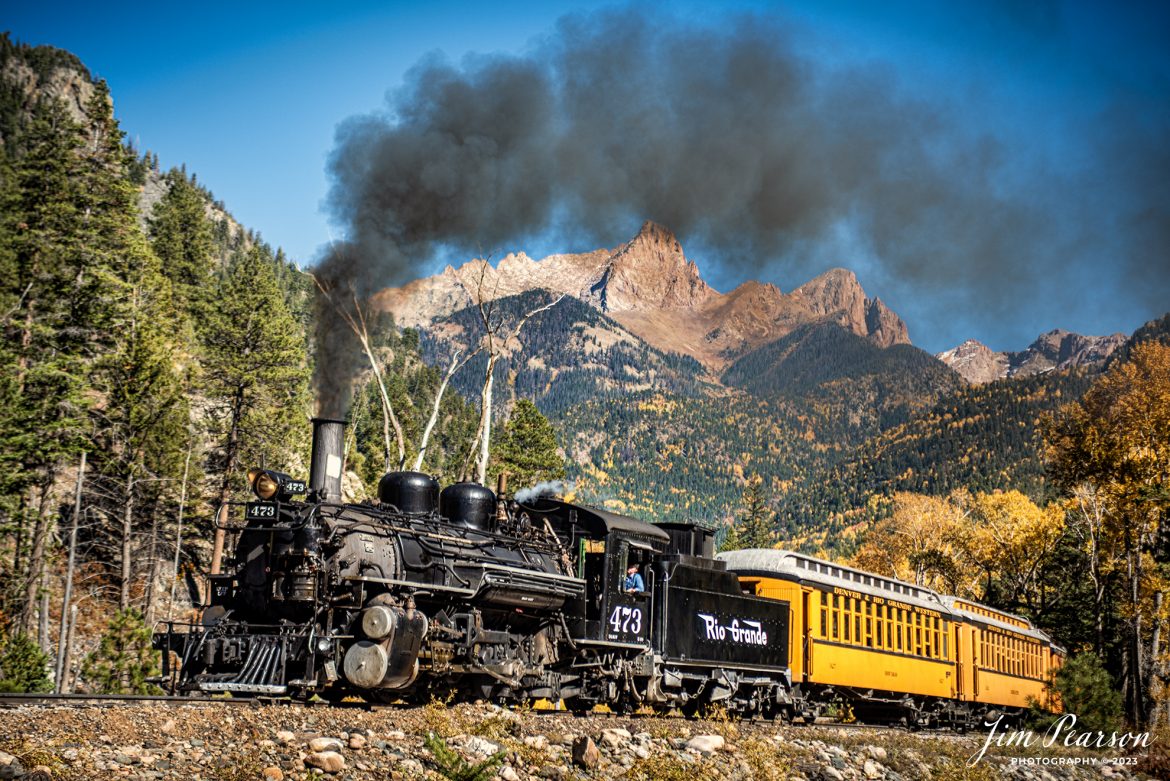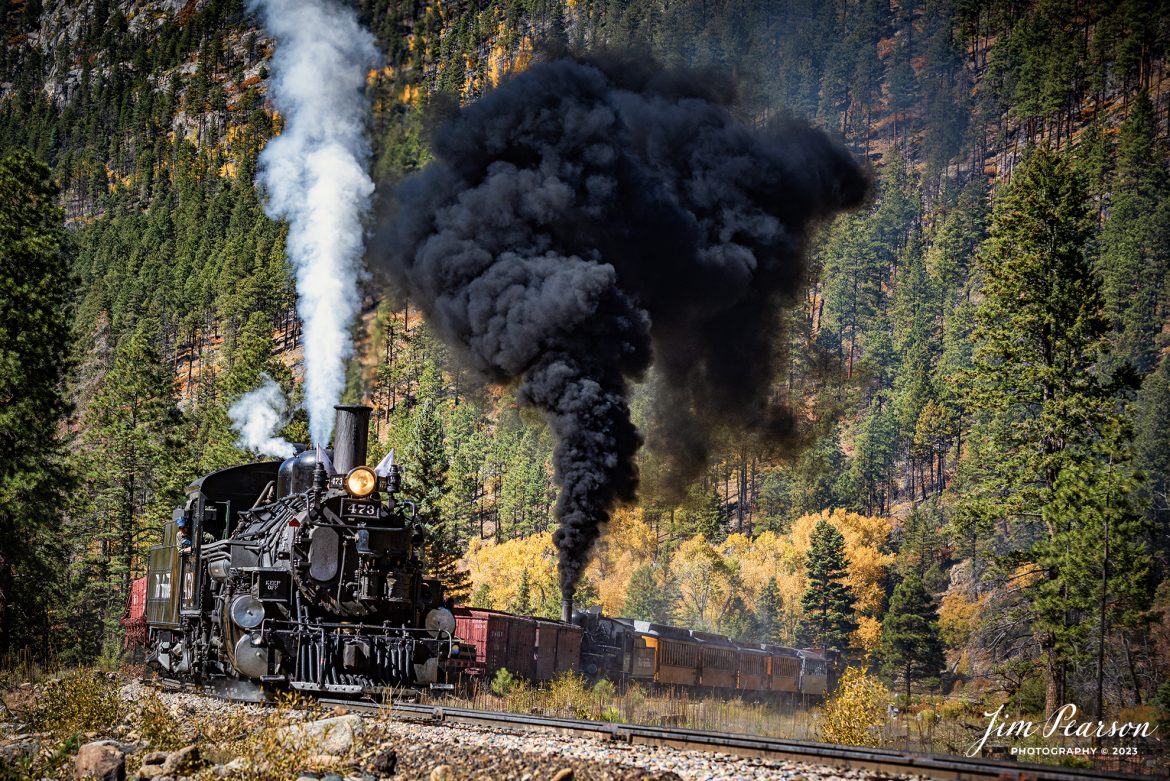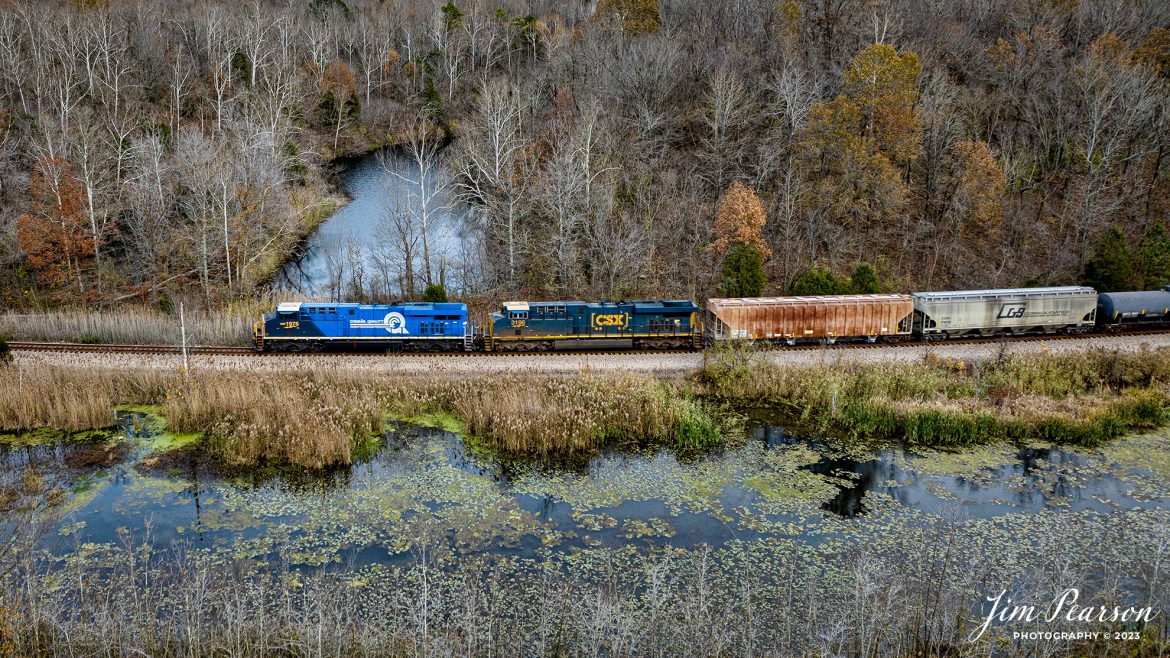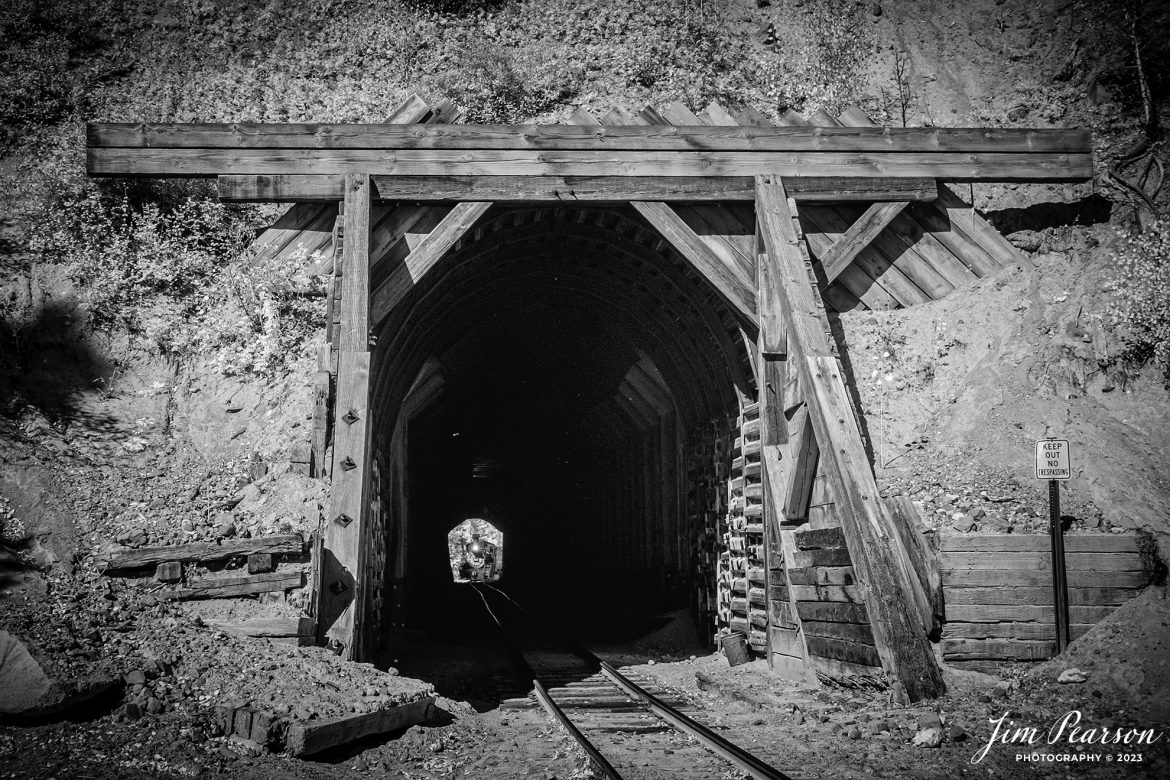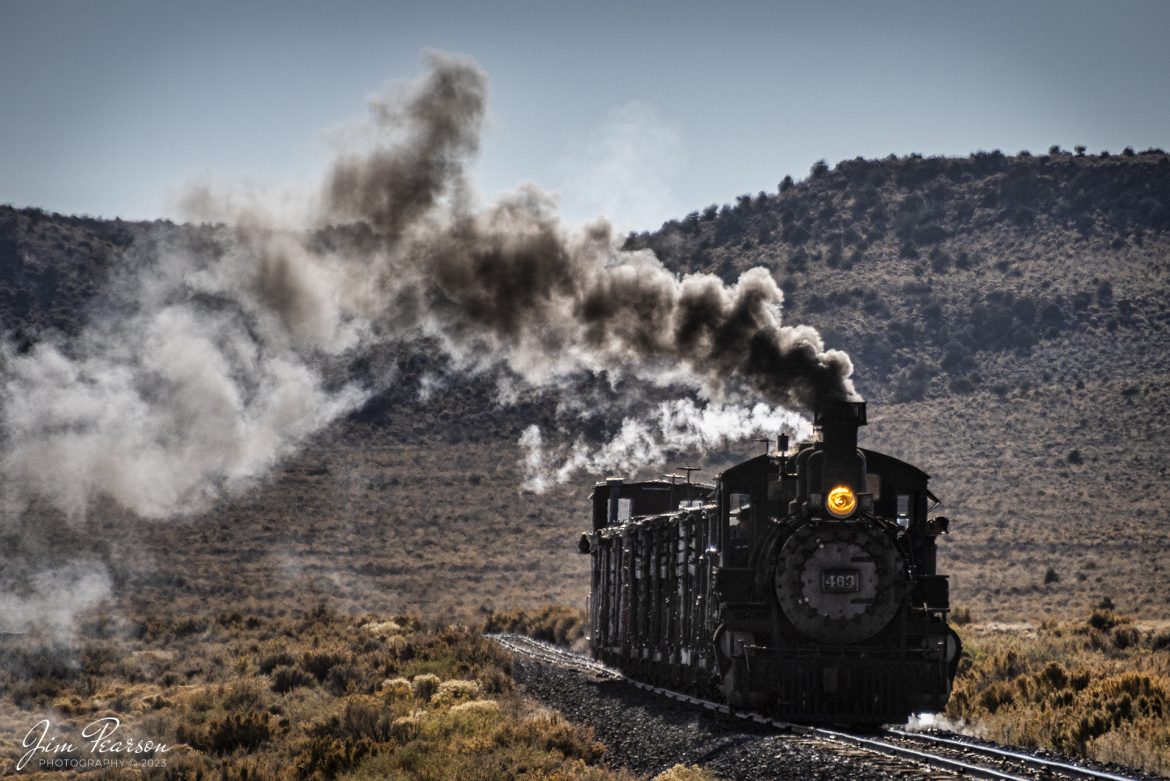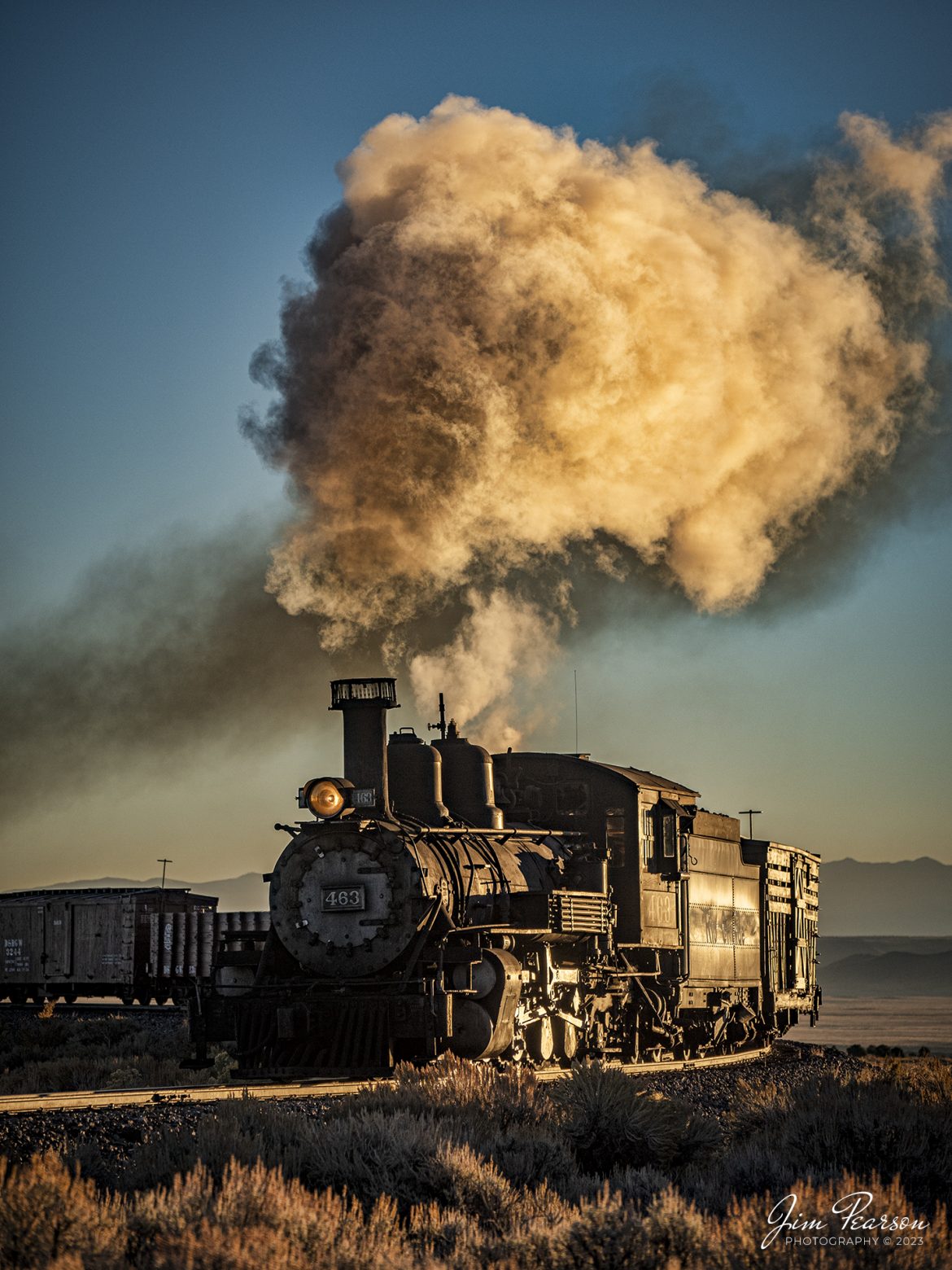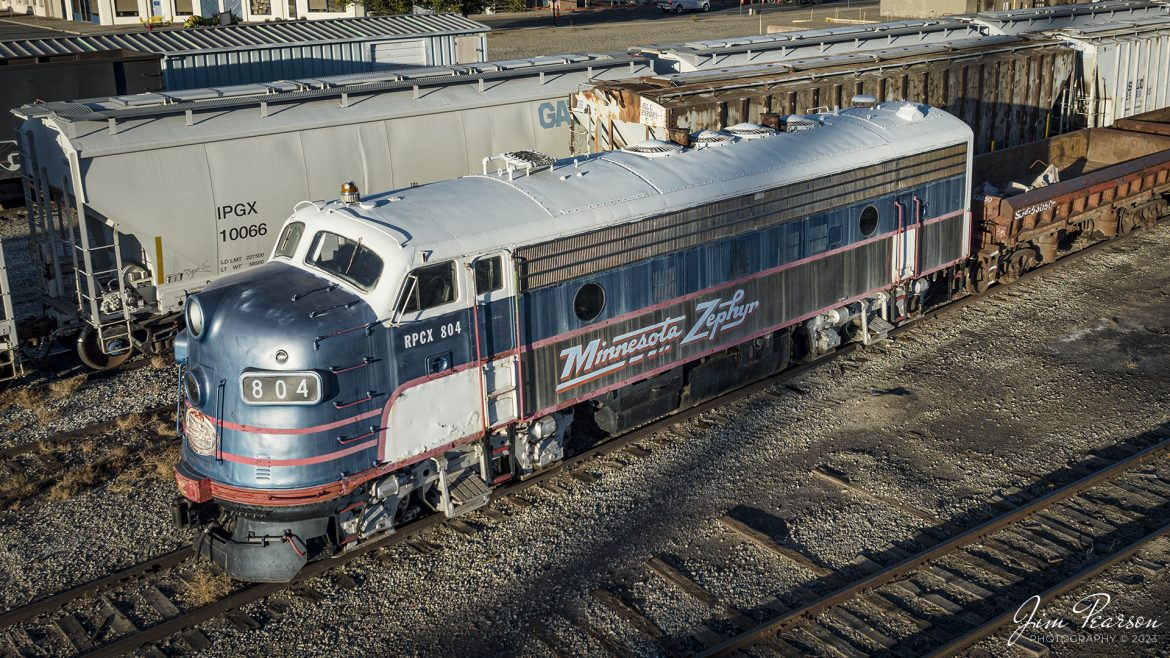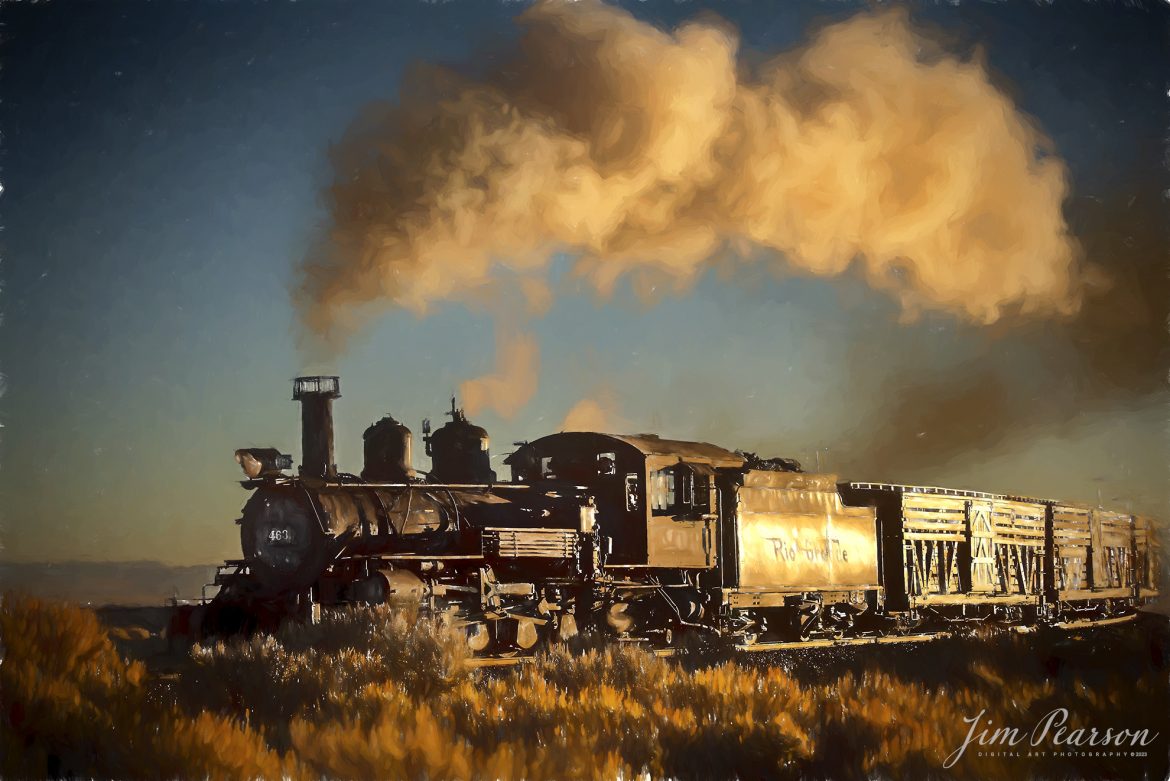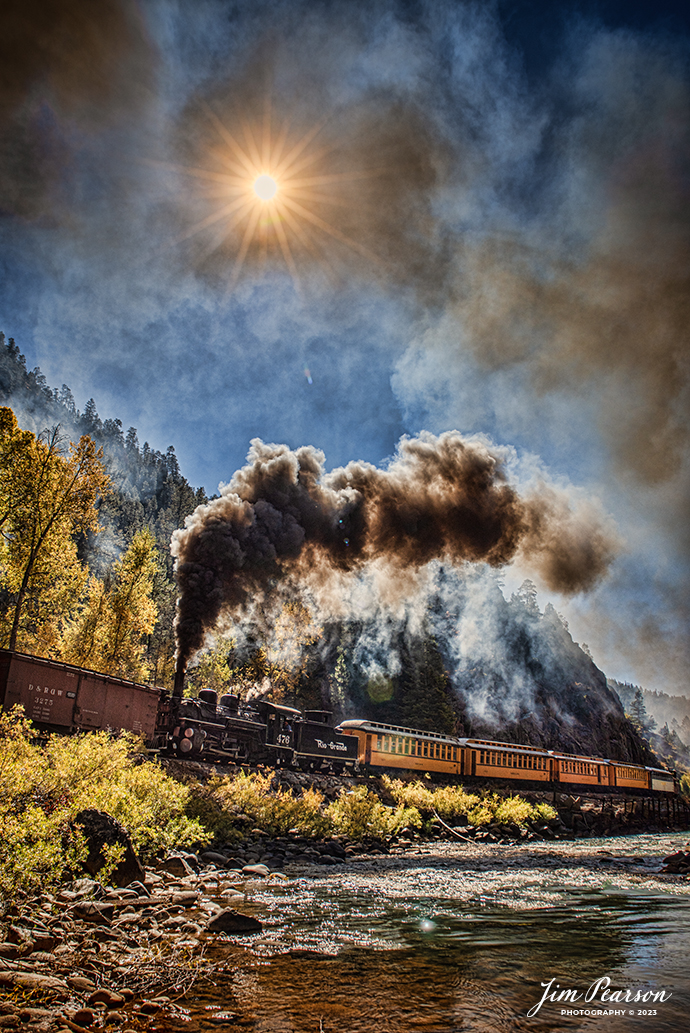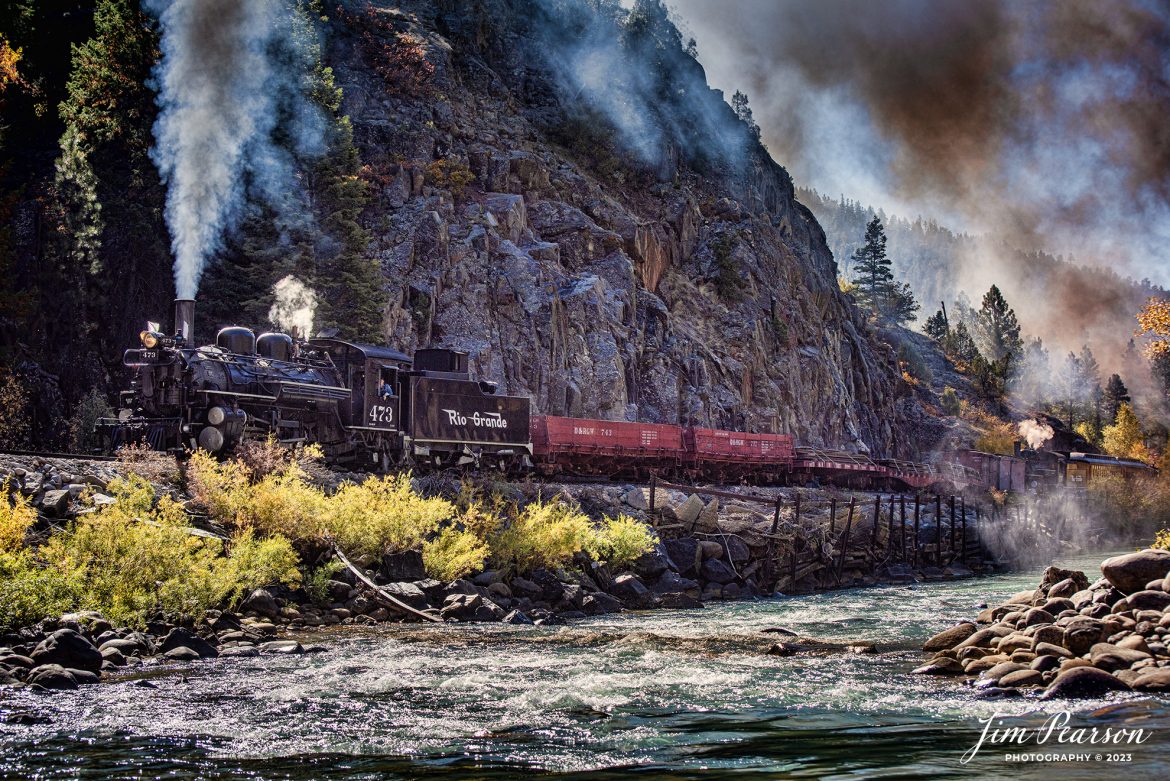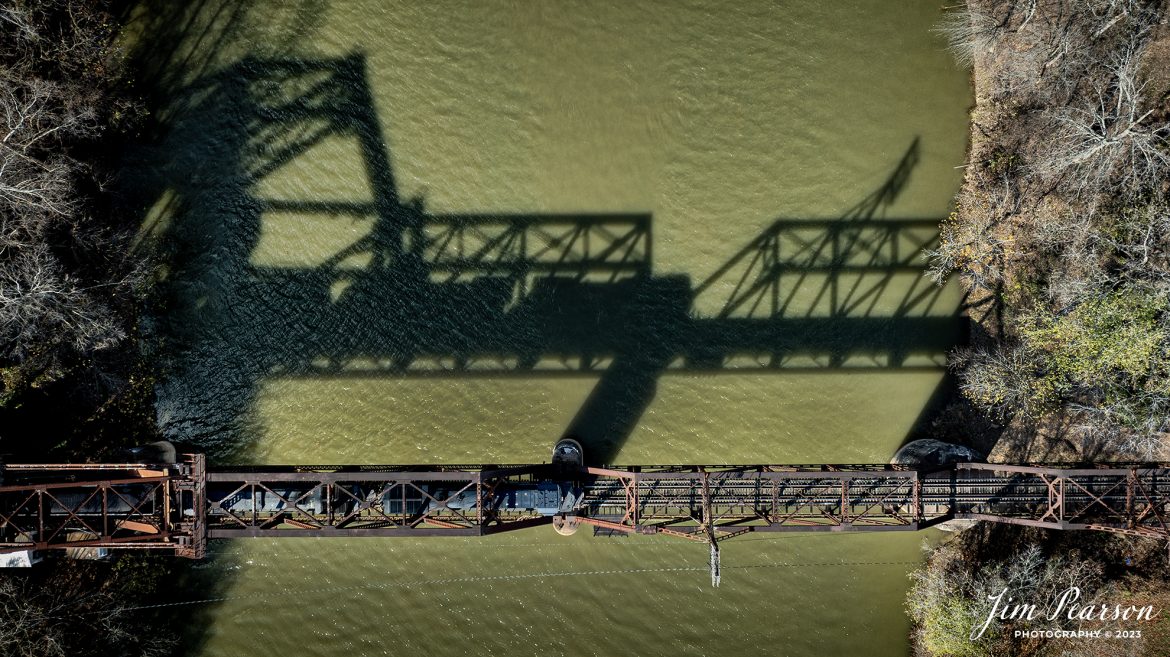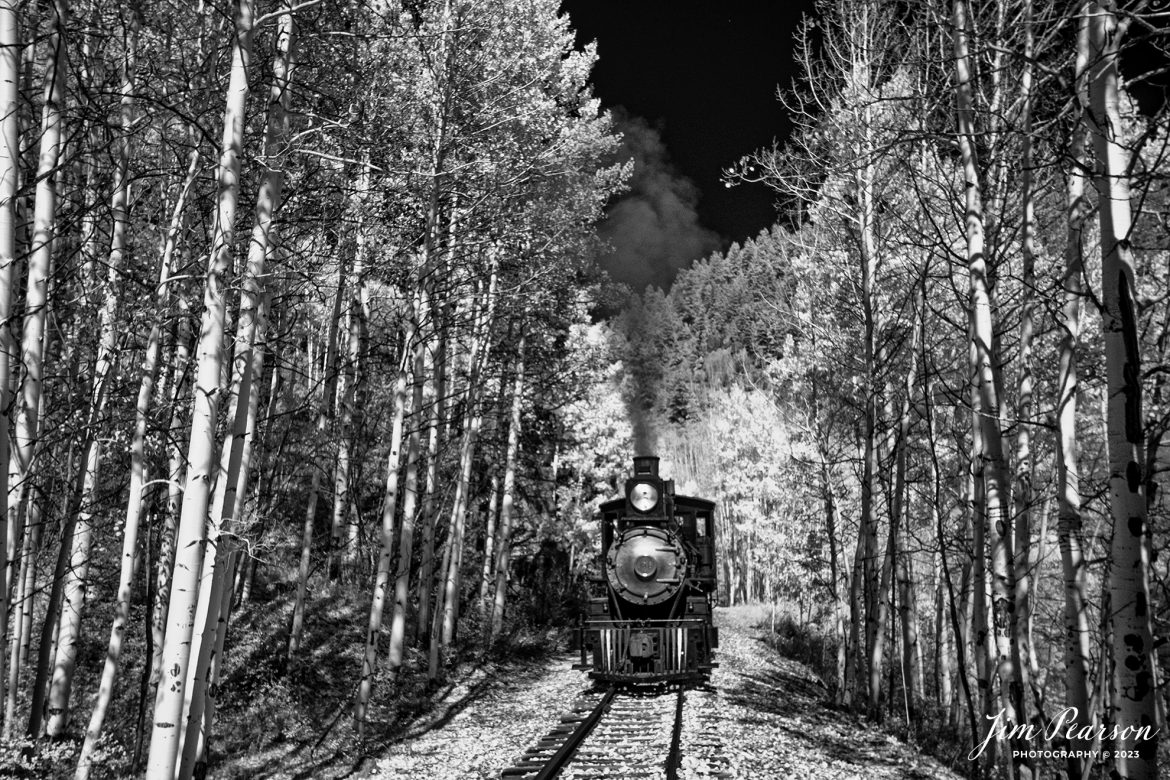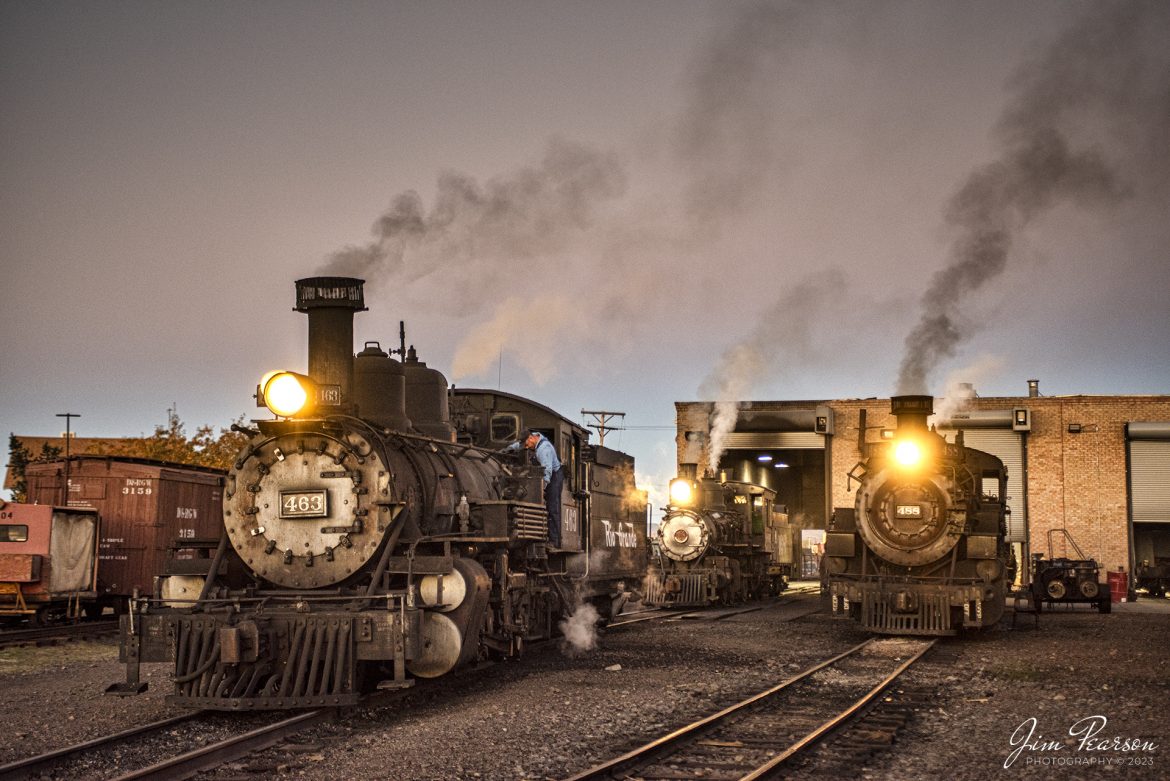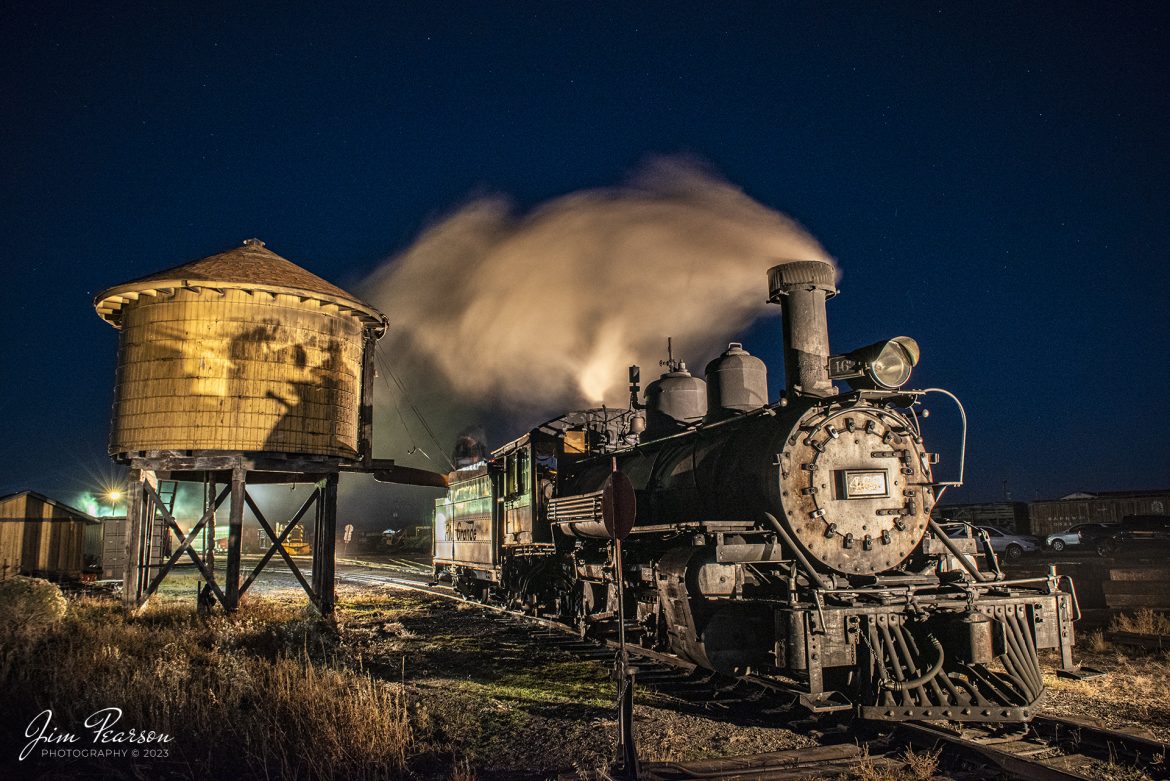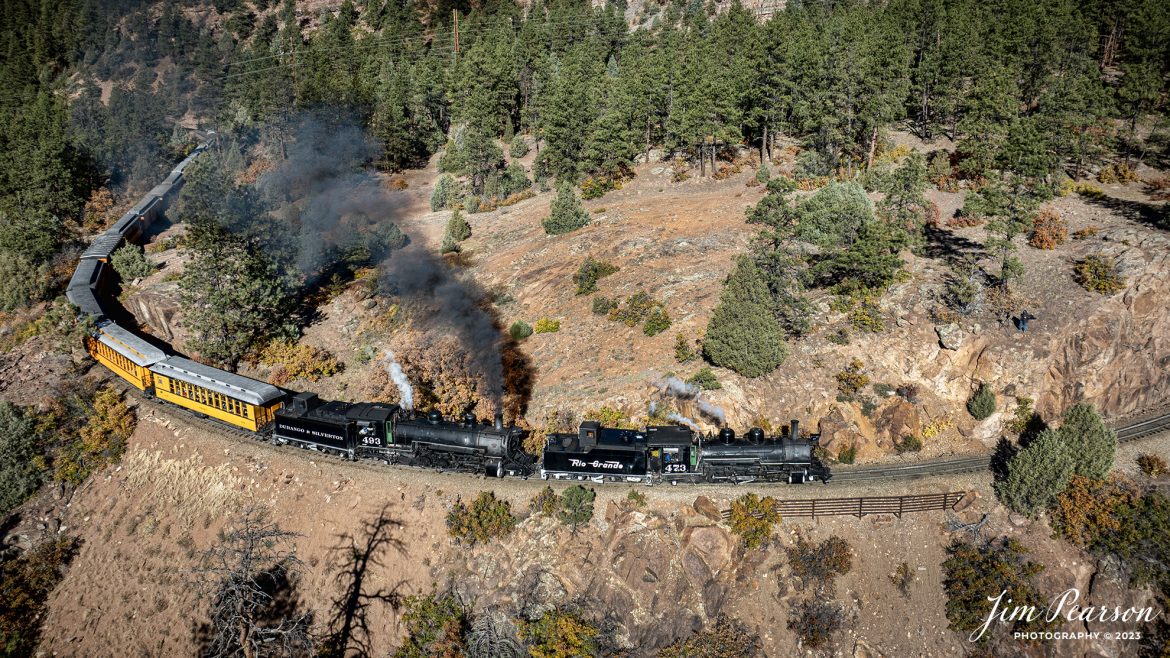Cumbres & Toltec Scenic Railroad steam locomotive D&RGW 463 approaches the water tower at Antonito, Colorado with a freight train, during a photo charter by Dak Dillon Photography on October 19th, 2023, as a switchman stands by to re-align the switch after he passes.
According to their website: the Cumbres & Toltec Scenic Railroad is a National Historic Landmark. At 64-miles in length, it is the longest, the highest and most authentic steam railroad in North America, traveling through some of the most spectacular scenery in the Rocky Mountain West.
Owned by the states of Colorado and New Mexico, the train crosses state borders 11 times, zigzagging along canyon walls, burrowing through two tunnels, and steaming over 137-foot Cascade Trestle. All trains steam along through deep forests of aspens and evergreens, across high plains filled with wildflowers, and through a rocky gorge of remarkable geologic formations. Deer, antelope, elk, fox, eagles and even bear are frequently spotted on this family friendly, off-the grid adventure.
According to History Colorado Website: Built in 1903 by the Baldwin Locomotive Works of Philadelphia, Engine No. 463 is one of only two remaining locomotives of the K-27 series originally built for and operated by the Denver & Rio Grande Western Railroad.
The K-27 series was a departure from the design most prevalent on Colorado’s narrow-gauge lines, resulting in a locomotive with one and one-half times more power. The arrival of this series marked a significant turning point in the operation of the D&RGW’s narrow gauge lines that was to remain in effect until the end of Class I narrow gauge steam locomotion in 1968. The Friends of the Cumbres & Toltec Scenic Railroad restored the engine to operating condition.
Tech Info: Nikon D810, RAW, Nikon 10-24 @ 70mm, f/4.5, 1/2000, ISO 110.

